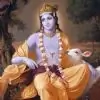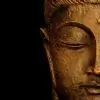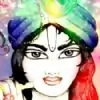Dear Friends, tomorrow is Mahalaya, which is a very auspicious day for us (all the Bengalees 😃), from this day we ACTUALLY start to FEEL the Spirit of Durga Puja!
What is Mahalaya?
In Bengal Mahalaya is an auspicious occasion observed seven days before the Durga Puja, and heralds the advent of Durga, the goddess of supreme power. It is an invocation and invitation to the mother goddess to rise, awake and descend on earth and annihilate the evils of the world by her Supreme Goodness -This is done through the chanting of mantras and shlokas and singing devotional songs. The day of Mahalaya ushers in the aura of Durga Puja. Durga Puja is widely celebrated in West Bengal. Durga Puja includes the worships of Shiva, Lakshmi, Ganesha, Saraswati and Kartikeya also. Modern tradition have come to include the display of decorated pandals and artistically depicted idols of Durga, exchange of Bijoya Greetings and publication of Puja Annuals.
The day of Mahalaya is also the day of Remembrance. On this day, people offer Tarpan in memory of their deceased forefathers, who were our near and dear ones but who are no longer alive with us today, though we cherish them in our hearts and minds. The banks of River Ganges in India are peopled with many priests seen busy performing Tarpan for devotees in groups. The rituals start from early dawn and last till mid-day. Devotees and worshipers observe a fast since morning and offer food, water, clothes and sweets to their forefathers. After offering Tarpan, people break their fast and have their first meal of the day.
Mahalaya signifies the termination of Pitri Paksha and the beginning of Devi Paksha, thus ushering in the season of religious festivals. Durgotsav, as this festival is known in Bengal, commences from Mahalaya – this is the day that Goddess Durga is supposed to begin her journey with her children from her husband Shiva's abode in Mount Kailash in the Himalayas to her parental home in the plains.
(Source:
http://answers.yahoo.com/question/index?qid=20090917222510AAVErMz )
Why's Mahalaya So Special?
Since the early 1930s, Mahalaya has come to associate itself with an early morning radio program called "Mahisasura Mardini" or "The Annihilation of the Demon." This All India Radio (AIR) program is a beautiful audio montage of recitation from the scriptural verses of "Chandi Kavya", Bengali devotional songs, classical music and a dash of acoustic melodrama. The program has also been translated into Hindi set to similar orchestration and is broadcast at the same time for a pan-Indian audience.
This program has almost become synonymous with Mahalaya. For nearly six decades now, the whole of Bengal rises up in the chilly pre dawn hours, 4 am to be precise, of the Mahalaya day to tune in to the "Mahisasura Mardini" broadcast.
The Magic of Birendra Krishna Bhadra
One man who'll always be remembered for making Mahalaya memorable to one and all is Birendra Krishna Bhadra, the magical voice behind the "Mahisasura Mardini." The legendary narrator recites the holy verses and tells the story of the descent of Durga to earth, in his inimitable style.
Bhadra has long passed away, but his recorded voice still forms the core of the Mahalaya program. In a sonorous, reverberating voice Birendra Bhadra renders the Mahalaya recital for two thrilling hours, mesmerizing every household with the divine aura of his narration, as the Bengalis submerge their souls in quiet moments of prayer.
A Landmark Composition
"Mahisasura Mardini" is a remarkable piece of audio drama matchless in Indian culture. Though the theme is mythical and the mantras Vedic, this program is a landmark composition. It's scripted by Bani Kumar, and narrated by Bhadra. The enchanting music is composed by none other than the immortal Pankaj Mullick, and the songs are rendered by famous singers of yesteryears, including Hemant Kumar and Arati Mukherjee.
As the recital begins, the serene morning air resonates with the long drawn sound of the sacred conch shell, immediately followed by a chorus of invocation, melodiously setting the stage for the recitation of the Chandi Mantra.
The Story of "Mahisasura Mardini"
The story element is captivating. It speaks of the increasing cruelty of the demon king Mahisasura against the gods. Unable to tolerate his tyranny the gods plead with Vishnu to annihilate the demon. The Trinity of Brahma, Vishnu and Maheswara (Shiva) come together to create a powerful female form with ten arms - Goddess Durga or 'Mahamaya', the Mother of the Universe who embodies the primeval source of all power.
The gods then bestow upon this Supreme creation their individual blessings and weapons. Armed like a warrior, the goddess rides a lion to battle with the Mahisasura. After a fierce combat the 'Durgatinashini' is able to slay the 'Asura' king with her trident. Heaven and earth rejoice at her victory. Finally, the mantra narration ends with the refrain of mankind's supplication before this Supreme Power:
"Ya devi sarbabhuteshshu, sakti rupena sanksthita Namasteshwai Namasteshwai Namasteshwai namo namaha."
Audio version of 'Mahisasura Mardini' from YouTube:- (most of the track is in Bengali 😊, except some of the Sanskrit parts)
* a) With some matching images by HMV Saregama .
Part 1:
Part 2:
(It has total 6 parts.)
* b) Here is a shorter version of the same audio track:
Part 1
Part 2:
(It has total 5 parts).
Joy Ma Durga! 😊



























